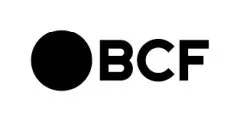Judicial decisions in matters of industrial design infringement are not common. The recent Federal Court decision in Crocs Canada Inc v Double Diamond Distribution Ltd, 2022 FC 1443, is worth noting.
A Protection Tool
In this case, Crocs, manufacturer of the famous molded shoe, was asserting its rights in a registered industrial design for its MAMMOTH shoes with fleece lining, against Double Diamond, which marketed shoes of the same style, also comprising a fleece lining.
The Court, relying in part on expert testimony, concluded, on one hand that Crocs' industrial design was original and not dictated solely by utilitarian functions and therefore valid, on the other hand, that Double Diamond was infringing Crocs' rights by marketing its similar products. The Court ordered Double Diamond to pay Crocs all the profits made on shoes sold in violation of Crocs' rights during the relevant period.
This decision is a reminder of the strength of the rights arising from registering an industrial design to deal with infringers.
An ornamental feature that allows a product to be recognized may possibly be protected through an industrial design registration, provided that the feature is original, i.e. that it does not bear a striking resemblance to another similar object of the same nature.
In addition to the style of a shoe, as in the Crocs case, an industrial design could also protect the shape of a bottle, or its cap, the shape of a kitchen accessory handle, the outline of a car hood, the shape of a computer screen, the style of an armchair or the knitting stitch of a sweater, for example.
Unfortunately, such a registration has limited longevity and cannot be renewed at the end of its term, which is 10 years from the date of registration or, if later, at the expiry of the 15-year period following the filing date of the application.
Extend Your Rights Through a Trademark Registration
Concurrently with the industrial design registration, it may be possible to obtain a three-dimensional trademark registration protecting the distinctive ornamental features of the goods that are the object of the industrial design registration, to the extent that it can be shown that they have become distinctive. In order to avoid a gap in the period of protection of these features, it is preferable to obtain the registration of the mark before the expiry of the industrial design. Therefore, anyone who has held an industrial design registration for more than five years and whose design has been commercially successful should therefore consider extending the protection of his rights through a trademark registration.
If the ornamental characteristics of the product have remained distinctive, obtaining a trademark registration is a very attractive option, especially if it can be demonstrated that the products have been sold for many years in Canada. Indeed, this allows for greater longevity of intellectual property rights since the trademark registration can be renewed, every ten years, as long as the trademark is used.
The content of this article is intended to provide a general guide to the subject matter. Specialist advice should be sought about your specific circumstances.



